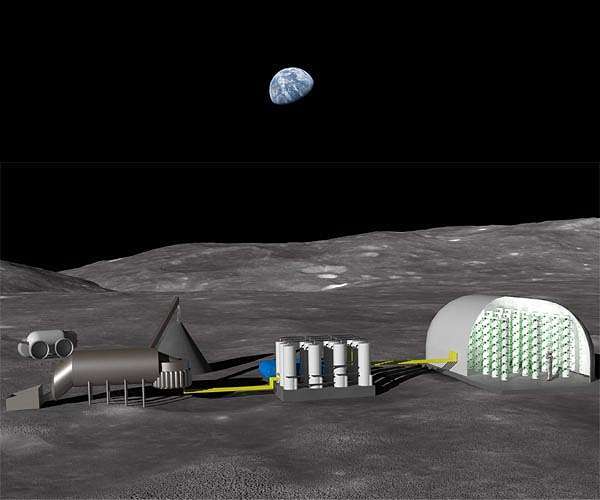3.08.2023

Blue Origin, the American aerospace manufacturer, is moving a step closer to making its innovative concept of generating solar power on the Moon a reality. This follows the receipt of a $35 million Tipping Point partnership awarded by NASA to continue developing its revolutionary technology known as the Blue Alchemist.
First revealed earlier this year, Blue Alchemist aims to produce solar cells from lunar regolith, a substance consisting of dust and crushed rock that is abundant on the Moon's surface. The technology uses a process known as molten regolith electrolysis, which not only helps generate electricity and power transmission cables anywhere on the Moon's surface but also produces oxygen-a useful byproduct for propulsion and life support.
NASA considers a technology to be at a Tipping Point when its investment can assist the innovation to evolve into a commercially viable solution. This significant investment will lead to an autonomous operation demonstration in a simulated lunar environment by 2026, marking a significant step forward in lunar exploration and potential colonization.
Pat Remias, vice president, Capabilities Directorate of Space Systems Development, expressed his gratitude, saying, "Harnessing the vast resources in space to benefit Earth is part of our mission, and we're inspired and humbled to receive this investment from NASA to advance our innovation. First, we return humans to the Moon, then we start to 'live off the land.'"
Since 2021, Blue Origin has been manufacturing solar cells and transmission wire from regolith simulants, signifying a critical stride toward establishing a long-term presence on the Moon.
The goal of the Blue Alchemist is to develop power systems on the Moon using readily available surface materials, negating the need for special substances from Earth. This approach is scalable, capable of removing power constraints anywhere on the lunar surface.
To achieve this, Blue Origin creates regolith simulants chemically and mineralogically equivalent to lunar regolith, including a representative lunar variability in grain size and bulk chemistry. This ensures the starting material is as accurate to real lunar regolith as possible, rather than a mere mixture of lunar-relevant oxides.
The company has already developed and qualified an efficient, scalable, and contactless process for melting and moving molten regolith. It's robust enough to handle natural variations in lunar regolith properties.
Utilizing these regolith simulants, Blue Origin's reactor produces iron, silicon, and aluminum through molten regolith electrolysis. Here, an electrical current separates these elements from the oxygen they are bound to, resulting in the useful byproduct of oxygen.
Through this process, the company can purify silicon to more than 99.999% purity-high enough for efficient solar cell creation. This method, which utilizes only sunlight and silicon from the reactor, is a significant departure from typical Earth-based silicon purification that requires large amounts of toxic and explosive chemicals.
The solar cells created need cover glass for protection from the harsh lunar environment. Without it, they would last mere days. Remarkably, Blue Origin uses only the byproducts of molten regolith electrolysis to make cover glass, extending the lifetime of lunar solar cells to over a decade.
The Blue Alchemist technology has a potential positive impact on Earth, as it enables the manufacturing of solar cells with zero carbon emissions, without water, toxic ingredients, or other chemicals. The ramifications of this technology extend far beyond lunar exploration, signifying a potential leap in sustainable energy production.
Quelle: SD

